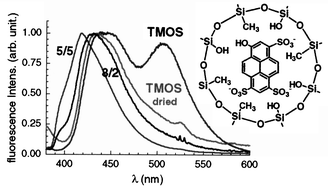Abstract
Low cost materials based on hybrid organic–inorganic sol–gel systems have been developed for use in the trapping and detection of monocyclic aromatic hydrocarbon contaminants emitted into the atmosphere. To this end, two strategies are followed; the first one aims at tailoring the pore size in order to selectively trap and discriminate benzene and toluene. The second is to decrease the pore polarity in order to eliminate the main interfering gas of the atmosphere, water vapor. The results of these strategies are reported in this paper. After describing the synthesis of silicon hybrid xerogels and thin films and the characterisation of their structural properties, we report the study of the local polarity of the pores, of the porosity and optical properties of the materials. These characterisation data will enable us to define the materials suited for hosting benzene and toluene.


 Please wait while we load your content...
Please wait while we load your content...